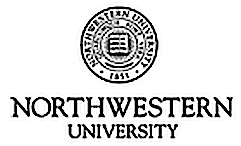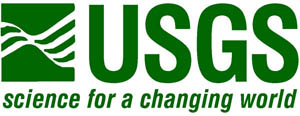Minimum Magnitude Visible on the NUEAPS Seismometer at Varying Distances Clayton Brengman
The seismometer at Northwestern University has the ability to detect many earthquakes from around the world, however, several questions remain surrounding the data produced by the seismometer. Two of these such questions are addressed in this paper, specifically, which earthquakes should produce a signal given a certain distance and magnitude, and what is the correlation between the signal produced on the seismometer and the Mw reported by the USGS. Using mathamatical analysis and manipulation, results to these questions were found providing two distinct results. The first is a model which can determine which earthquakes should produce a signal on the seismometer given a certain magnitude and distance. For example a magnitude 4.5 earthquake that occurs 1000 km away from Northwestern University would produce a signal on the seismometer on a day with normal seismic noise. The second result is a numerical multiplier, which when multiplied by the signal amplitude will produce a rough estimate of the Mw whichis consistent with the USGS reported Mw. A full copy of the paper can be found here.
Causal Relationship between Seismic Noise and Wave Action on Lake Michigan. Ben Heath
Seismic noise is observed on all seismic stations. It is a background signal with many diverse causes, such as wind, rain, snow and waves. Wave action is what concerns this study. The act of waves crashing can create noise. Waves interacting in deep water can also create seismic noise, due to a non-attenuating signal creating a pressure oscillation that can reach the seafloor (Longuet-Higgins, 1950). We hypothesized that due to the proximity of the seismometer to Lake Michigan, the major cause of noise is wave action in deep water. To show this, we compared seismic noise levels on the seismometer with weather conditions and pictures of the lake. Moreover, we sought to model thenoise created due to wave interactions on Lake Michigan and compare to the noise observed. This served two purposes. First, it would reveal to a rough degree whether waves cause seismic noise. Second, if we could show that waves created seismic noise, a comparison between the model and the data would reveal the effects of reflections of waves in Lake Michigan on seismic noise generation. The data clearly suggest that the role of waves interacting in deep water is intimately tied to the amplitude of seismic noise. Moreover, due to peaks in frequencies in the observed data roughly matching the peak in frequency in the modelled data, we conclude that, whether or not wave interactions have a large effect on noise in Lake Michigan, they do have an effect.
Grades 6-12 Lesson Plans Karen Tekverk
Students typically understand the types of earthquakes, their relationship to tectonic plate boundaries, and the effects that earthquakes cause at the surface of the Earth. However, many students do not tie these components together into a holistic understanding. We believe teaching about seismic waves can be used to improve this situation, relating an earthquake to the associated damage. We designed an outreach program to teach students about earthquakes and seismology in a research facility, university, or school. Utilizing backward design, we discovered students' prior knowledge, then developed a set of goals for the students learning, and finally created a series of lessons integrating students' prior understanding with the new knowledge from each goal. The lesson plan is broken into four discrete activities and an assessment. In these lessons, students learn about plate boundaries and tectonics by plotting earthquakes around the globe, investigate the ways that waves from earthquakes travel through the Earth, perform experiments using an actual seismometer, and trilaterate earthquakes on globes. The assessment asks students to tie all of their learning together in an activity simulating the work of professional seismologists. We implemented this activity at Northwestern University for two reasons. First, visiting a research university can provide students with unique insight into the world of scientific research. Second, and more pragmatically, we felt that it was important to have students interact with an actual seismometer, such as the one installed in the Department of Earth and Planetary Sciences. However, the lesson plan has also been used successfully in a middle school setting, with a transportable seismometer.
Here are links to PDF files describing each activity in the lesson plan, followed by a link to the entire lesson plan (in PDF):
- Pre-Activity: Earthquake Mapping (in classroom)
- Short Pre-Activity: Earthquake Discussion (in outreach setting)
- Activity 1: Interactive Intro to Earthquakes and Seismic Waves Using Slinkies and Students
- Activity 2: Experiment with an Actual Seismometer
- Activity 3: Earthquake Trilateration on a Globe
- Assessment: Students Act as Seismologists Interpreting Seismic Phenomena


